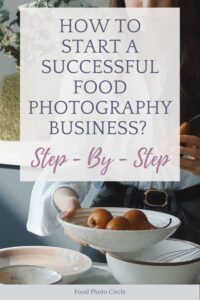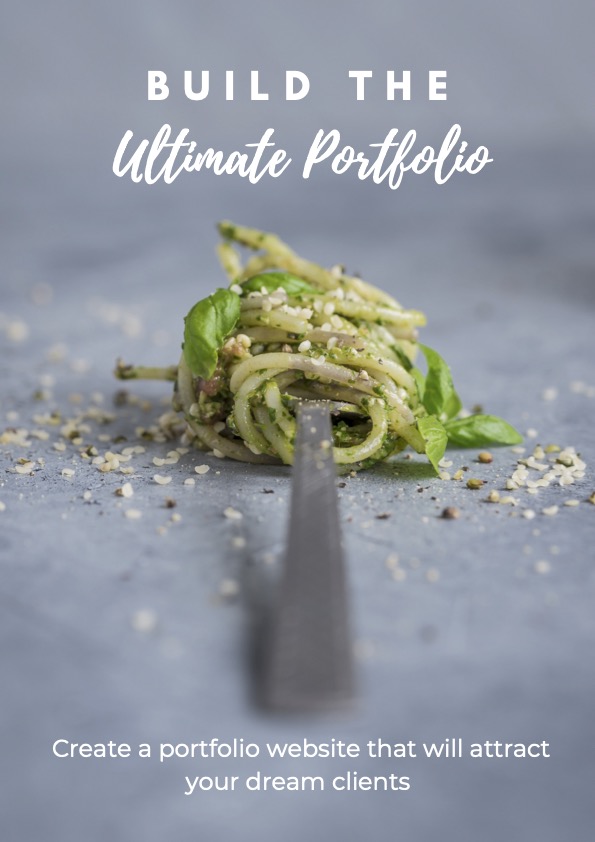How to start a successful food photography business
step-by-step
Even if you only have a camera and one lens
Whether you’re a professional photographer looking to break into the food industry or an amateur who loves to capture the beauty of your culinary creations, starting a successful food photography business can be a rewarding and fulfilling career.
Imagine finally being able to play with your food, and getting paid for it!

Reality check: it’s not all cupcakes and unicorns. Breaking into the food photography industry can be hard and there are many challenges.
To help you get started, here are some tips and strategies for launching and growing a successful food photography business.
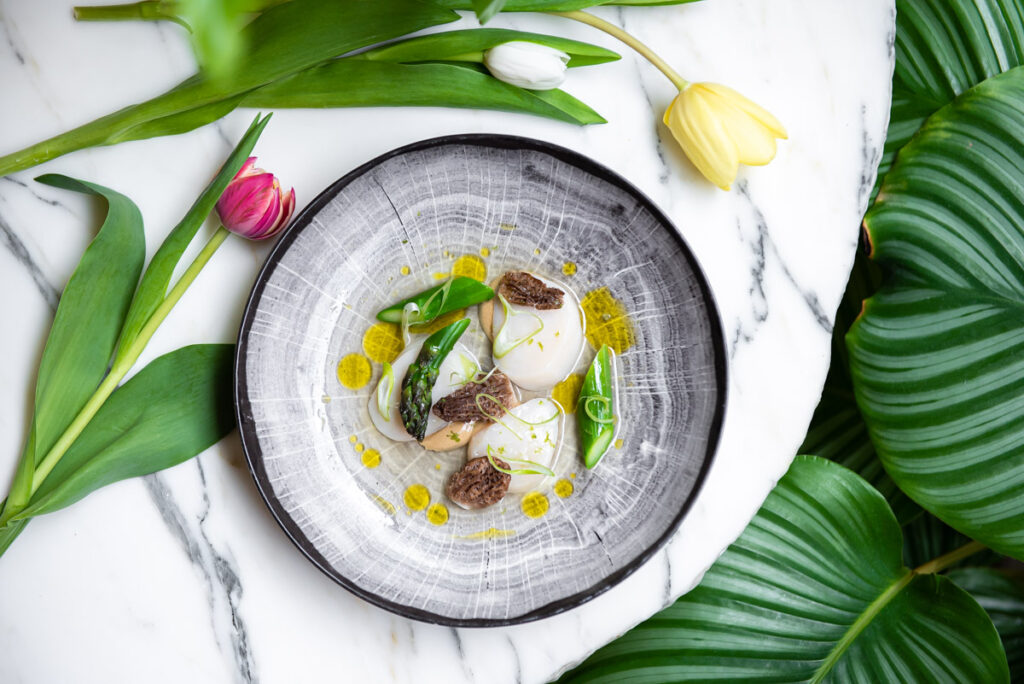
1 - Develop your food photography skills and expertise
As with any business and craft, it’s crucial to build the necessary skills and expertise to succeed.
In the world of food photography, this means understanding and mastering the technical aspects of photography as well as having an eye for capturing the beauty and essence of food.
Before considering a career in food photography, you need to be proficient with lighting, composition, food styling, prop styling, post-processing…
To develop your skills, taking classes, workshops, or enrolling in a formal food photography program (wink wink 
Check out our eBooks + masterclasses !
You can also learn from other photographers by studying their work and experimenting with different techniques and styles.
Something that greatly helps is “reading” the images that speak to you and ask yourself:
Why do I like this picture? What is it that draws me to it? Is it the light, styling, colours, props…
Take inspiration and try to recreate those elements in your pictures.

In addition to technical skills, it’s also important to have a good understanding of food and cooking.
This will enable you to capture the flavours, textures, and aromas of food in your photos and create compelling images that tempt the viewer’s taste buds!
To learn more about the culinary arts, consider taking cooking classes, working in a restaurant or simply cooking at home!
Remember, practice makes improvement!

2 - Create your online presence
Building an online presence in the form of social media channels and your website is essential for any food photographer. It’s often the first point of contact with your potential clients!
Decide on a maximum of two platforms to start with, create an account and set up your profiles.
You might choose IG and FB, or IG and TikTok, or TikTok and Pinterest. Choose a platform that resonates with you.
While there are some best practices to follow when posting, focus on quantity rather than quality.
Keeping a certain standard for your photos is important, however consistency in posting and engaging is much more important.
If you focus on quality too much, you might post less consistently or stop altogether.
Social media is also a great tool to show your personality and start building your network in the food photography industry.
Connecting and engaging with other people in the industry like food stylists, food photographers, food bloggers, chefs etc is one of the most important things you can do and the sooner you start, the better!
Good networking takes time and social media can definitely help you get started.

3 - Create an effective food photography portfolio
Having a strong portfolio is essential for any food photographer. Your portfolio is often the most important tool that will help potential clients decide to hire you for their project.
That’s why your portfolio should showcase your best work and highlight your unique style and approach to food photography.
It’s crucial to make a good impression and illustrate your whole range of skills and expertise.
To create a professional-looking portfolio, use a website or online portfolio building platform to display your work such as Squarespace, Format or WordPress.
When creating your portfolio, unlike social media, focus on quality over quantity (go for 30-50 images to start with) and include a mix of shots: commercial, editorial, landscape, portrait, dark, light, close ups, wider scenes, action, people and hands…
You want to have a good mix of all of these things, put together nicely so the layout makes sense and flows.

A portfolio is also an evolving tool!
As your skill grow, you need to keep updating it with new work that reflects your most recent abilities.
You will have to do this in stages.
Build it and then have a professional food photographer review it!
All the work and tweaking you put into your portfolio might not get you the results you want unless you ask for feedback from someone who knows the ins and outs of the industry.
A portfolio review from a pro food photographer will help your portfolio stand out from the competition, reflects your unique style, is technically well arranged.
They will help you choose the right images and tell you if your portfolio is missing some key photos. You will understand what clients are looking for!
You will also get advice on how to present your work to your dream clients so they will beg to shoot with you!!

4 - Set competitive rates and packages
Pricing is one of the main (and most difficult) factors to consider when starting a successful food photography business.
It is one of the main struggles food photographers face when they want to go pro.
“How much should I charge for my photos”?
Sounds familiar? We get this question all, the. time.
Research the market and your competition to determine competitive rates and packages for your services.
Be sure to factor in your experience, equipment, and the time and effort required for each project when setting your rates.
This is easier said than done!
Start by understanding your CODB (cost of doing business) meaning: how much does it cost you to run your food photography business?
Once you get clear of what your expenses are, it’ll be much easier to come up with how much you should charge to run the show and make a profit.

You may want to offer discounts or special deals to attract new clients and build your portfolio when you’re starting out.
However, a word of warning: this could backfire.
The right way to do it is to make your client understand the value they’re getting, despite the discount you applied for portfolio building.
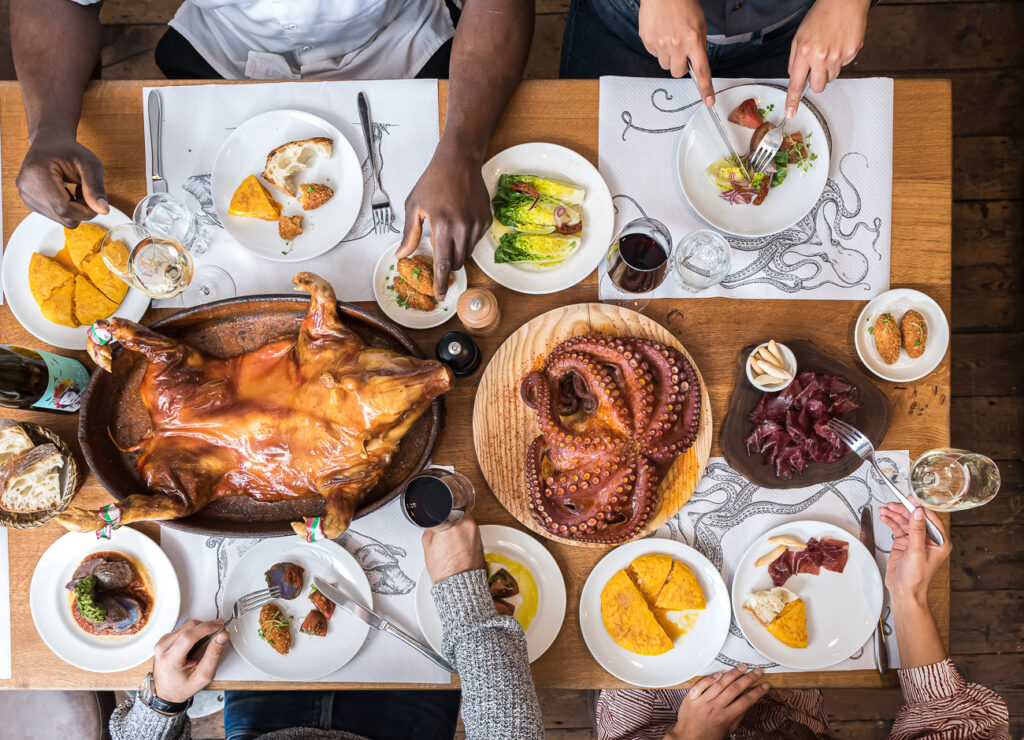
5 - Build a network in the food photography industry
This is arguably the most important part. Networking and marketing are key to building a successful food photography business.
It is the part that takes the most effort and consistency.
And it also takes courage – I feel you, fellow introverts!
Connect with other food photographers, chefs, food stylists, food bloggers to get your name out there and build your network.
Consider attending food photography trade shows, conferences and events, and join relevant online communities and forums to connect with potential clients.
Google is your best friend here, have a look at what’s happening in your country.
Be sure to also have a strong online presence, with a professional website and active social media accounts showcasing your work.
Networking can also provide valuable opportunities for learning and collaboration.
Community over competition is the key here!
Having strong professional relationships with other food photographers and industry professionals, will skyrocket your success.
You can learn from their experiences and expertise, collaborate on projects or photo shoots, and refer clients to each other.
This is KEY! Working with food stylists, prop stylists and chefs as part of a creative team is an essential skill that clients want to see in your portfolio and that you need to master.

Having strong professional relationships with other food photographers and industry professionals, will skyrocket your success.
You can learn from their experiences and expertise, collaborate on projects or photo shoots, and refer clients to each other.
This is KEY! Working with food stylists, prop stylists and chefs as part of a creative team is an essential skill that clients want to see in your portfolio and that you need to master.

6 - Invest in better food photography equipment
Having the right equipment is crucial for producing professional-quality food photography.
However, did you notice how we put this as the last step?
Assuming you already have a camera (any DSLR or Mirrorless) and at least one lens (the 50mm is cheap and the best for food photography) you are good to start your food photography business.
Nope, you don’t need anything else to start.
1) First and foremost, you should invest in your education.
2) Secondly, you should invest in marketing. Some trade shows, awards and conferences have a cost. Your website and promotional material has a cost.
3) Lastly, you can invest in gear.
Early on, you may want to invest in backdrops, props, and other accessories to help you enhance your photos and create your unique style.
These are relatively cheap and can really elevate your photos to make them look more premium without the need for fancy lenses and cameras.
Contrary to popular beliefs, gear is really not the factor that is going to make you a pro photographer.
When you’ve made some money, reinvest in higher quality cameras, lenses, and lighting equipment that will enable you to capture more high end images of food.
If you already have camera and lenses, you will want to invest in better lighting equipment such as flashes, strobes, light modifiers etc.
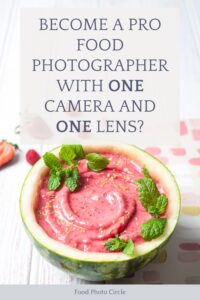
1) First and foremost, you should invest in your education.
2) Secondly, you should invest in marketing. Some trade shows, awards and conferences have a cost. Your website and promotional material has a cost.
3) Lastly, you can invest in gear.
Early on, you may want to invest in backdrops, props, and other accessories to help you enhance your photos and create your unique style.
These are relatively cheap and can really elevate your photos to make them look more premium without the need for fancy lenses and cameras.
Contrary to popular beliefs, gear is really not the factor that is going to make you a pro photographer.
When you’ve made some money, reinvest in higher quality cameras, lenses, and lighting equipment that will enable you to capture more high end images of food.
If you already have camera and lenses, you will want to invest in better lighting equipment such as flashes, strobes, light modifiers etc.
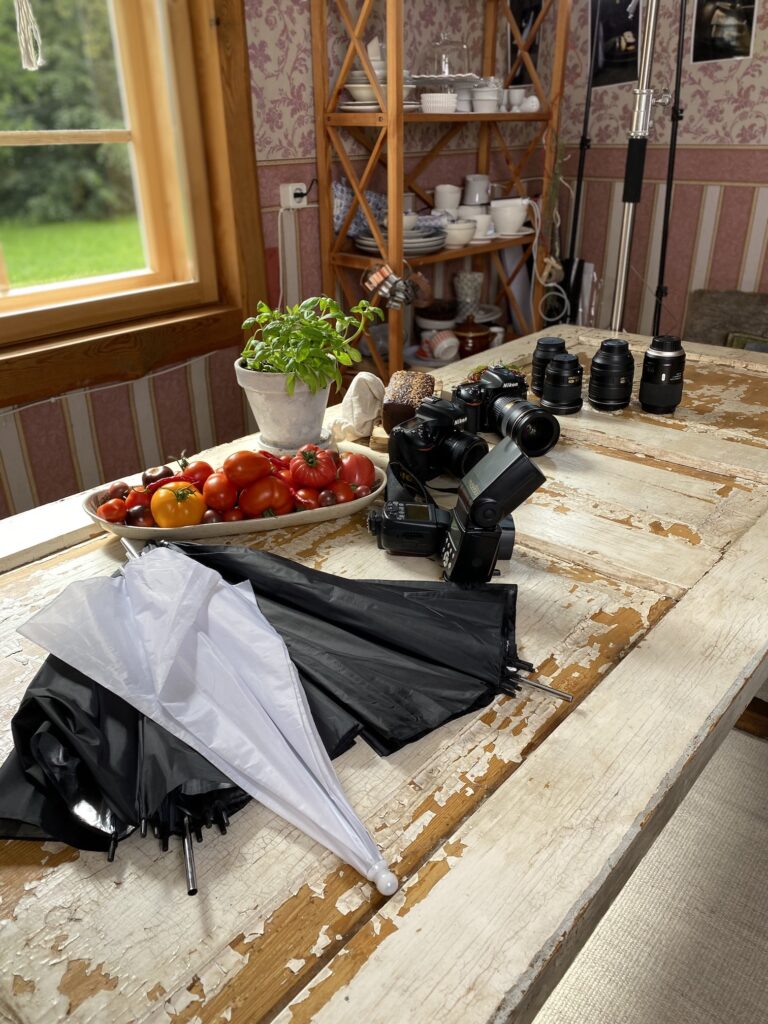
Conclusion
Starting a food photography business can be difficult if you don’t know have a plan or a roadmap.
There’s a better way to do it!
By following these tips and strategies, you can launch and grow a successful food photography business.
Not gonna lie, it takes dedication, hard work, and a passion for capturing the beauty of food.
If you have these ingredients, you can definitely turn your love for food photography into a rewarding and lucrative career.
And have a ton of fun while doing it! 🙌🏻
P.S. Make sure your DOWNLOAD OUR FREE PDF about building a portfolio!
